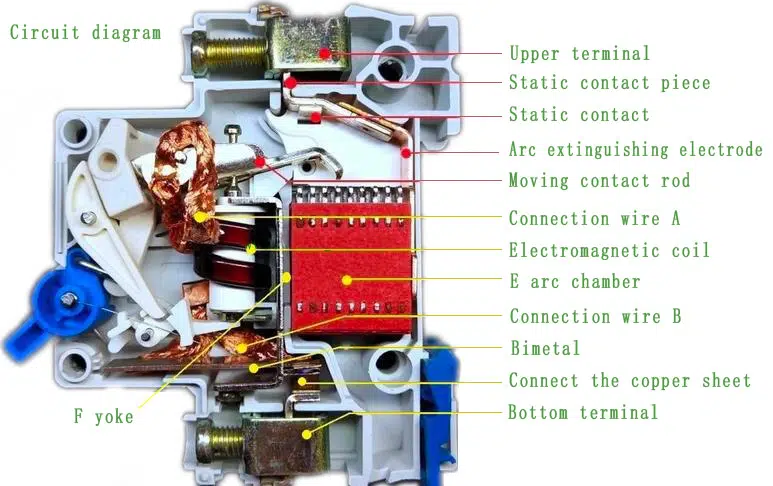What is MCB?
Circuit breakers are one of the safety accessories to consider for your household. MCB stands for Miniature Circuit Breaker. It has fix rating from 0.5A to 63A and for higher rating; it is an adjustable circuit breaker that has an electro-mechanical mechanism of action. MCB works based on either the bi-metallic strip or by a magnetic trip coil. Both methods work by deflecting the latch attached to stop the flow of current.
- If high current flows for longer than preset time, the bimetallic piece gets heated and deflects the latch to open the circuit.
- If multiple times of current flows that the rated current as per the setting, the magnetic coil uses the magnetic flux and deflects the latch to open the circuit.
The MCB can be reset manually which saves lots of time and cost against a fuse. Hence, it is an easy solution and an alternative to fuses to control the sudden surge of charges in the circuit.

Types of MCB
It is important for you to know about the types of MCB trip curves to decide what type to use for different appliances for the correct electrical system. This is the selection chart or the criteria to make a call on one of the MCBs. But before that, it is vital to understand what a trip curve means. Trip curves are essentially nothing but the maximum current that a particular MCB can withstand. Once the ideal current loading is breached, the circuit automatically cuts off.
There are about six different types of MCB, which are A, B, C, D, K and Z.
Firstly, Type A trips off the circuit when the current exceeds 2-3 times for 0.1 second the actual current rating. Since this type is highly sensitive to short circuit, it is better suited for semiconductor devices.
Next, type B, which trips off when the current flow is 3-5 times for 0.04 – 13 seconds the actual flow and finds a use for cable protection.
The best-suited type of MCB for domestic appliances, where the current load is medium, is type C. Type C MCB trips off when the flow of current is 5-10 times for 0.04 – 5 seconds more than normal.
Type D MCB has a high resistance as they can withstand up to 10-20 times for 0.04 – 3 seconds the current rate. If you are looking for circuit breakers for devices with high starting current load like a motor, then type D is the ideal choice.
The type K MCB withstands up to 8-12 times for 0.1 seconds the initial charge and thus can be used for bulky load devices.
The type Z MCB withstands up to 2-3 times for 0.1 seconds the initial charge and thus can be used for bulky load devices
One thought on “What is MCB? How MCBs Work? Types of MCBs.”
Comments are closed.